June 24:
The Guests (1979):
The Letters (2004):
June 24:
The Guests (1979):
The Letters (2004):
The Eagles’ song “Hotel California” (henceforth HC) was released in 1976. Three years earlier, Frank Herbert (of Dune fame) published, in his anthology The Book of Frank Herbert, a short story titled “Gambling Device” (henceforth GD). I’ve never seen anyone suggest that the story had an influence on the song, but it seems to me to be a possibility:
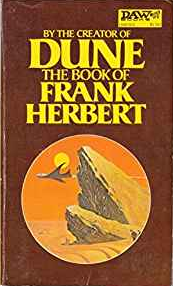
In GD, Hal and Ruth Remsen are driving along a highway through the California desert at twilight; the “heavy floral scent of [Ruth’s] corsage wafted up to him.”
In HC, the narrator is driving along “a dark desert highway” (presumably likewise in California, given the song’s title) with the “warm smell of colitas / rising up through the air.”
In GD, the Remsens are lost, and when they come across a hotel by the side of the road, where “the setting sun … gleamed like fire on the windows and their metal frames,” they decide to stop. Later they find that a “silvery glow shimmered” from the hotel’s ceilings.
In HC, the narrator “had to stop for the night,” when “up ahead in the distance” he “saw a shimmering light” – the Hotel California.
In GD, Ruth says she doesn’t “like the looks of that place … It looks like a prison.” But Hal reassures her: “It’s just the way the sunset’s lighting it …. It makes those windows look like big red eyes. … We’d better take this while we can.” An apparent member of the hotel staff leads them down a “hall [that] seemed to stretch out endlessly.”
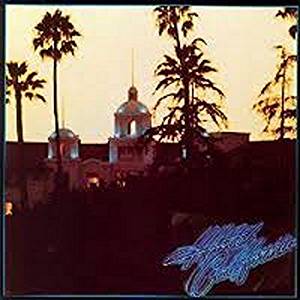
In HC, the narrator ponders: “This could be Heaven or this could be Hell.” An apparent member of the hotel staff “showed me the way … down the corridor.”
In GD, the Remsens soon find that they are indeed prisoners, and that the entire hotel is actually an alien device designed to prohibit gambling. “You are now residents of the Desert Rest Hotel,” the device itself informs them. “You may decide to leave … but you have no choice of where you will go, in what manner or when,” since this would constitute gambling: “Free choice beyond the immediate decision is a gamble.” A fellow guest elaborates: “You’ll want to know if there’s hope of escape. … Perhaps. Some just disappear. But maybe that’s another … way.”
In HC, the other guests explain that they “are all just prisoners here / of our own device.” The night manager elaborates: “We are programmed to receive; / you can check out any time you like / but you can never leave.”
Are these parallels close enough to make it certain that “Hotel California” was influenced by “Gambling Device”? No. And in other respects the two narratives diverge in their plots and concerns.
But Dune was massively popular in the 1970s, and the 1973 anthology in question featured a cover designed to appeal to readers of Dune (see above); so it’s certainly a possibility.
Another postscript to my Hydra trip – on weekends (which, happily, is when I was there), the aforeblogged Douskos a.k.a. Xeri Elia restaurant has live music like unto this:
June 23:
I Tried to Leave You (1974):
Boogie Street (2001):
June 22:
Stories of the Street (1967):
Memories (1977):
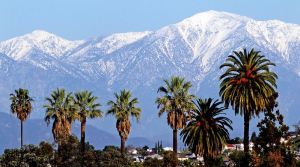
The air was cool, and smelled of sage. It had the clarity that comes to southern California only after a Santa Ana wind has blown all haze and history out to sea – air like telescopic glass, so that the snowtopped San Gabriels seemed near enough to touch, though they were forty miles away. The flanks of the blue foothills revealed the etching of every ravine, and beneath the foothills, stretching to the sea, the broad coastal plain seemed nothing but treetops ….
The sun was obscured by a cloud for a moment, then burst out again. Big clouds like tall ships coasted in, setting sail for the mountains and the desert beyond. The ocean was a deep, rich, blue blue, a blue in blue within blue inside of blue, the heart and soul and center of blue. Blinding chips of sunlight bounced on the swelltops. Liquid white light glazed the apricot cliff of Corona del Mar, the needles of its Torrey pines like sprays of dark green. Ironwood color of the sun-drenched cliff. … Behind him Orange County pulsed green and amber, jumping with his heart, glossy, intense, vibrant, awake, alive. His world and the wind pouring through it.
As you might guess (since it’s been the subject of my two most recent “guess the author” posts – here and here), I recently got around, at last, to reading the “Three Californias” trilogy (The Wild Shore, The Gold Coast, and Pacific Edge) by Kim Stanley Robinson, about whose other work I’ve blogged before (see, e.g., here and here). (For Robinson’s own account of the origin and meaning of his trilogy, see this interview.)
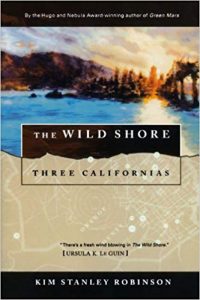
The trilogy concerns three possible futures for southern California: a) post-apocalyptic, b) urban sprawl, and c) ecotopia – three timelines linked by one character who occurs in all three (and who seems to have a vague inkling of his other lives, his alternative pasts and possible futures – see The Wild Shore, pp. 214-221, and Pacific Edge, pp. 63 and 181), as well as by some structural and thematic elements (for example, each novel begins with an archeological excavation and ends with an attempt at sabotage). There are echoes of Ursula K. Le Guin and Philip K. Dick (Robinson was a student of one and wrote his dissertation on the other), as well as prefigurations of his own later fiction, but the trilogy is very much its own thing – and, as one would expect from Robinson, thought-provoking and beautifully written.

While Robinson’s three futures represent, in effect, two bad possibilities and one good one, the portrait is not simplistic: the two dystopian novels offer glimmers of hope and spaces of freedom, while the third, utopian novel represents utopia not as a fixed end point but as something that needs to be continually fought for, defended, and extended – which seems to me to be the right way to think about it. (And his utopia is certainly not one in which all the protagonists live happy lives or find their way to happy endings.)
When it comes to the specific content of his utopia, as opposed to his abstract idea of how to think about utopia as such, Robinson’s vision is much more of a mixed bag, from my (or more broadly, any LWMA) point of view. As I’ve said before, Robinson’s economic and political ideals leave him with “one foot in vital, grassroots, quasi-anarchist radicalism” and “the other in dreary, top-down, paternalistic authoritarianism.” (This conflict actually gets lampshaded somewhat – e.g., at pp. 282-285 of Pacific Edge – though without resolution.) But the trilogy is well worth reading despite this.
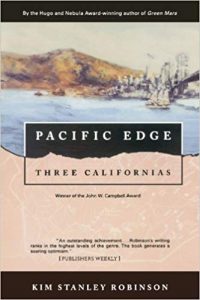
I particularly want to recommend the trilogy, though, not just to readers in general but specifically to those who know and love California, especially southern California. Anyone for whom the towns and climate and natural landscape of the region are a geography of their own heart will find a special joy in recognising them in their varied incarnations through the three novels.
(There’s a certain irony in the fact that Robinson, who has the good fortune to live in the California of the present, has written a trilogy filled with longing for Californias of the past and possible future, but mostly frustration with the California of the present – which by contrast looks pretty damn good to me, despite its admitted flaws. Yes, I’m homesick!)
| M | T | W | T | F | S | S |
|---|---|---|---|---|---|---|
| 1 | 2 | 3 | 4 | 5 | 6 | 7 |
| 8 | 9 | 10 | 11 | 12 | 13 | 14 |
| 15 | 16 | 17 | 18 | 19 | 20 | 21 |
| 22 | 23 | 24 | 25 | 26 | 27 | 28 |
| 29 | 30 | 31 | ||||